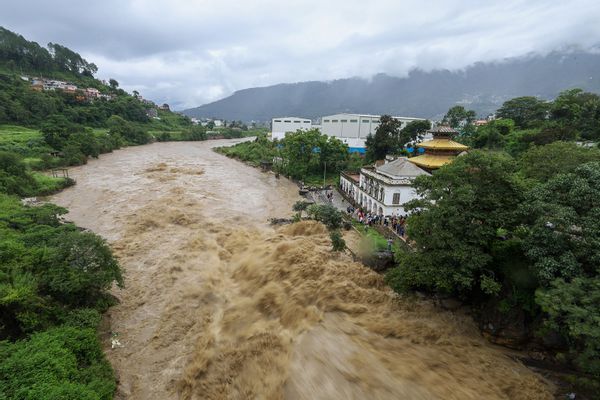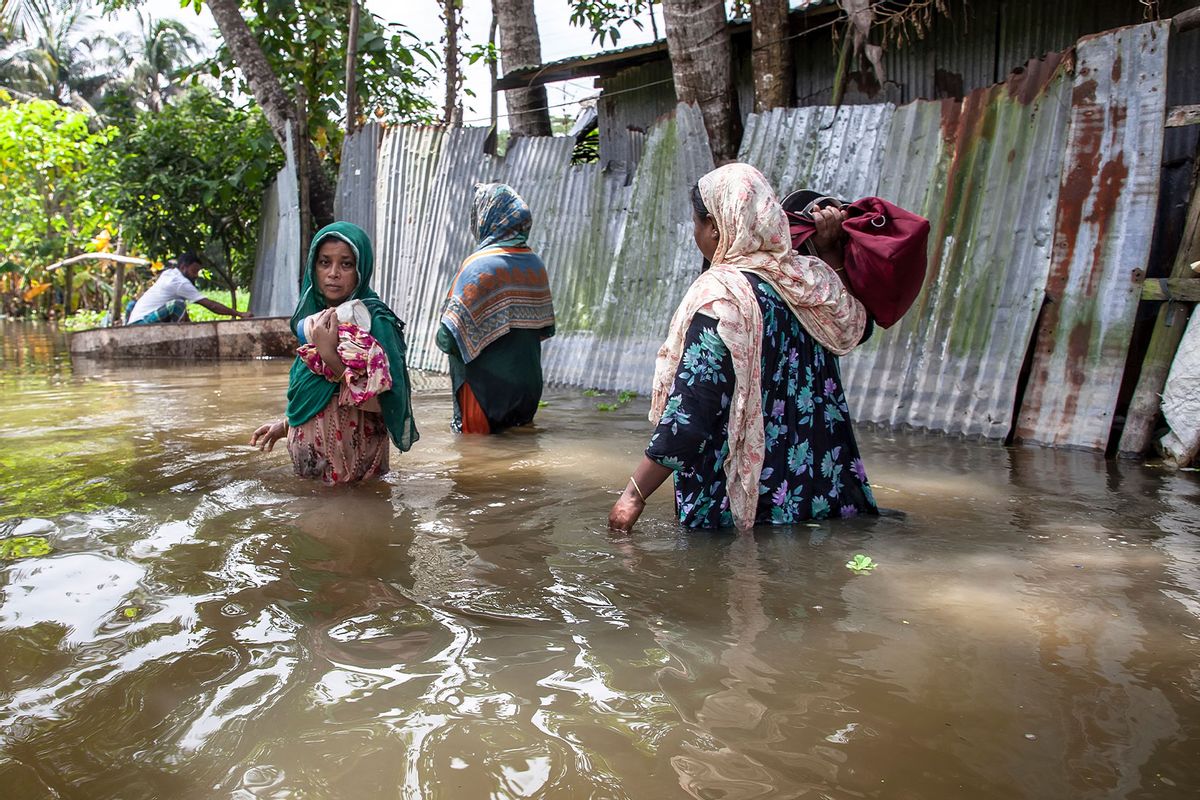The effects of climate change are being felt more and more each year. The increased heat is making everything more wet, which may seem counterintuitive at first, because heat waves are usually associated with dryness. But the more heat is in the air, the more moisture can actually be present. This is why rainfall has become so much more intense in some areas, with precipitation in the U.S. increasing at an average rate of 0.18 inches per decade since 1901.
As climate change spirals out of control, rare and severe weather patterns are becoming far more common. This means stronger hurricanes, more massive storms and bigger floods thanks to burning fossil fuels that spew heat-trapping greenhouse gases. And it will only get worse, experts warn, if we don't curb emissions. Unfortunately, as we just recorded our hottest summer ever, for the second year in a row, we're clearly going in the opposite direction, so we can expect a future with even more extreme weather.
"Extreme temperature and rainfall will increase rapidly over many regions of the world over the next two decades."
A recent study in the journal Nature Geoscience underscores just how severe these changes are going to be, and for how many people. According to researchers from Oslo, Norway's CICERO Center for International Climate Research and the University of Reading's Department of Meteorology, nearly three out of four humans alive today will experience intensified heat and rainfall over the next two decades unless global heating is curbed.
"Our study shows that extreme temperature and rainfall will increase rapidly over many regions of the world over the next two decades compared to the changes we have experienced in the past due to natural variations in the climate," lead author Dr. Carly Iles from the CICERO Center told Salon. "While absolute changes in climate extremes are well studied, the speed at which they change is not, and yet this is important because the faster extremes change, the less time there is to adapt, and the more likely we are to see unprecedented extremes."
Iles added that a majority of the planet's residents will experience changes in terms of extreme weather that "come faster than we’ve experienced in modern history. This applies even if we cut emissions of greenhouse gases drastically, but such cuts will still help make the problem much more manageable."
Dr. Michael E. Mann, a climatologist at the University of Pennsylvania who was not involved in the study, argued that if anything the new report "may vastly underestimate" the real problems being caused by climate change, such as floods, rainfalls, droughts and wildfires.
"They’re using boundary conditions from climate models that don’t resolve some of the critical physics behind how climate change is impacting these events — specifically, resonant atmospheric planetary waves," Mann said. "We recently published an article in PNAS, for example, showing that the climate models fail to capture the mechanisms that made the 2021 Pacific Northwest 'Heat Dome' event so extreme."
 The Bagmati River is flooding in Chovar, Kathmandu, Nepal, on August 6, 2024. (Subaas Shrestha/NurPhoto via Getty Images)Dr. Kevin Trenberth, a distinguished scholar at the National Center for Atmospheric Research, who was also not involved in the study, told Salon that he also believes the study likely understates the severity of climate change threats.
The Bagmati River is flooding in Chovar, Kathmandu, Nepal, on August 6, 2024. (Subaas Shrestha/NurPhoto via Getty Images)Dr. Kevin Trenberth, a distinguished scholar at the National Center for Atmospheric Research, who was also not involved in the study, told Salon that he also believes the study likely understates the severity of climate change threats.
"By using ensembles, these authors explore aspects of natural variability, but the models they use are flawed, especially with regards to extremes of precipitation and also El Niño," Trenberth said, referring to the global climate cycle. "They likely understate the actual threats. Nevertheless, time and time again, warnings of possible or even likely future events and risks typically bring only limited responses and even insurance is not taken out. The nearer term local and regional issues are always of bigger concern. Only when one adopts a longer term, 10 to 20 year perspective, does one's values and perceptions change."
Trenberth observed that this short-term perspective is especially common in areas beset by conflict and war.
"Who cares about 20 years from now when you might be dead tomorrow?" Trenberth said. "Who plans for such risks when there are shortages of money and food?"
Want more health and science stories in your inbox? Subscribe to Salon's weekly newsletter Lab Notes.
"This applies even if we cut emissions of greenhouse gases drastically, but such cuts will still help make the problem much more manageable."
While the exact magnitude of this impending intense heat is up for question, Iles told Salon that there are some certainties, including how it will impact ordinary people — and what could possibly be done to mitigate this impact.
"The 70% [of the population impacted by new intensified heat, particularly closer to the equator] should anticipate a rapid intensification of temperature extremes in particular, but also heavy rainfall events in some regions," Iles said. "Rapidly cutting greenhouse gas emissions reduces this number to 20%. Nevertheless, in either case it is important for populations to be aware that weather extremes are likely to worsen, and for adaptation strategies to be implemented."
Among other things, Iles called for "heat action plans" and legislation that protects outdoor workers, prepares for floods and upgrades buildings and infrastructure to withstand extreme heat and flooding.
"The first step in adapting to a new climate is knowing what may come," Iles said. "Wherever we live, we all need to consider if we’re vulnerable to more intense rainfall or more powerful heat waves, and then take the steps we can in order to make our lives and our communities more resilient."
We need your help to stay independent
Mann also argued that people need to accept that climate change models will always have a level of uncertainty baked into them — which, unfortunately, can make it more difficult to convince people of the need to prepare.
"The point is that climate model-based projections of extreme weather are very likely underestimating the potential for increased extreme events in the future," Mann said. "Uncertainty, once again, is not our friend, and it’s another example of how the models have if anything been conservative in their projections of some of the key impacts of climate change."
Iles echoed that observation.
"Our key result is really how quickly damaging weather conditions are changing around the world," Iles said. "Adaptation now needs to be put as high on the agenda as cuts in emissions and nature conservation."
Read more
about climate change



Shares